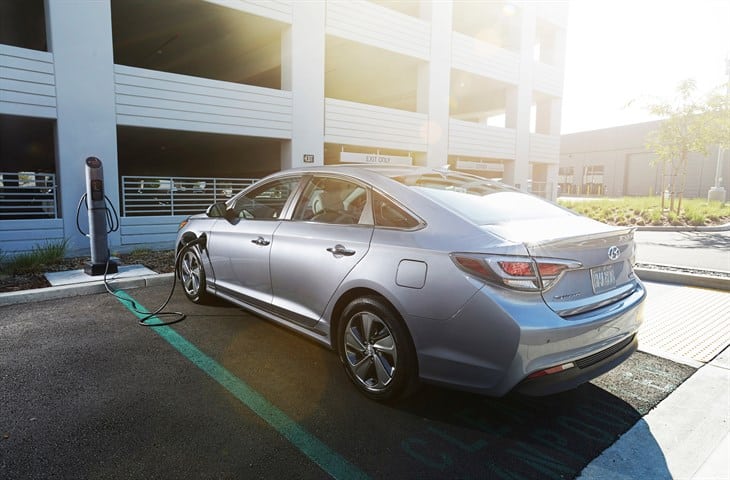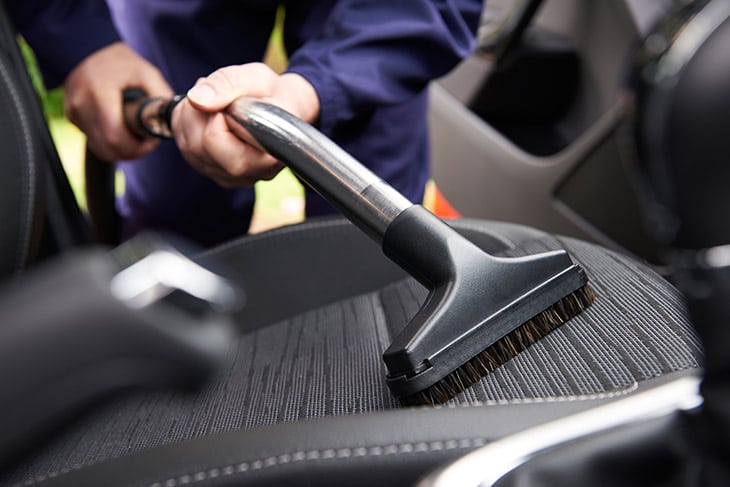Anyone who lives in a relatively warm and sunny climate has experienced the feeling of getting into a car that’s been parked in the sun. The air is heavy, the steering wheel is too hot to touch, and you just can’t seem to turn the A/C on high enough. On a day with temperatures that reach 95 degrees Fahrenheit, the interior of a car can hit 116°F in an hour. The car’s dashboard, steering wheel and seats get even hotter.
All that heat isn’t just inconvenient. Excessive sunlight and heat can also damage the interior, exterior and engine of your car. Let’s find out how.
How Excessive Sun and Heat Affect Your Car
How do sunlight and heat affect your car? They can cause the dashboard, seat upholstery and exterior paint to fade, crack and become brittle. Leather and vinyl are especially susceptible to these problems, as excessive heat pulls oils out of them. This damage looks unsightly and can also be expensive to fix.
Excessive heat also impacts your tires. At high temperatures, tires, especially those that are under-inflated, are more likely to blow out, which is extremely dangerous. In the heat of summer, your engine also works harder. If it’s not in prime condition or fluids are low, high temperatures may prove to be too much for it. This situation can, of course, lead to dangerous situations if a problem occurs while you’re driving.

How to Protect Your Car
So how can you protect your car from these awful fates? Luckily, there are numerous things you can do to keep your vehicle from overheating. Here are eight of them.
1. Park in the Shade
If possible, when parking your car, park in the shade, especially if you’ll be leaving your vehicle for an extended period. Doing so will reduce the temperature in your car, though not by a whole lot. On a 95°F day, the interior of a car parked in the shade will reach 100°F in an hour, as opposed to 116°F for one parked in the sun.

2. Use Windshield and Window Covers
To block out damaging UV rays and reduce the temperature of your car a little further, use windshield and window covers. Get covers that fit completely over your windows. You can get one for just the windshield or buy some for the windows too for extra coverage.
3. Apply Window Film
Window film filters offer similar benefits as window covers but provide them continuously, even while you’re driving. Window film permanently darkens your windows and blocks 99 percent of UV rays as well as up to 55 percent of solar heat. An untreated window filters out just 25 percent of UV rays.
4. Utilize Seat Covers
You might also consider investing in seat covers. They’ll protect your seats, whatever material they’re made out of, from UV rays and keep them cooler for you.
5. Take Care of Your Car’s Interior
Regularly cleaning your car’s interior helps keep it looking good and prevents dust, dirt and grime from getting baked into your seats and dash. If you have leather seats, use leather conditioner to avoid cracking.
6. Regularly Wash and Wax
You should also regularly wash, dry and wax your car’s exterior. Regularly washing your car prevents dirt and debris from damaging its paint. Just try to avoid washing your car in direct sunlight, as the heat can dry the soap, leaving stains. A layer of wax can help protect your car’s finish from UV damage.
7. Maintain Proper Tire Pressure
To minimize the risk of blowing out your tires, fill them to the pressure recommended by the vehicle manufacturer. You should also ensure that a mechanic checks your tires according to the recommended maintenance schedule.
8. Check Engine Fluids
Another way to prevent damage caused by heat and the sun is to keep up with your car’s maintenance and ensure that its fluids are always sufficiently filled. This strategy can prevent the engine from overheating.
You can’t escape extreme heat and sunlight entirely unless you move to, say, Alaska. You don’t have to migrate north, though, to protect your car from sun and heat damage. Just follow the tips above.








